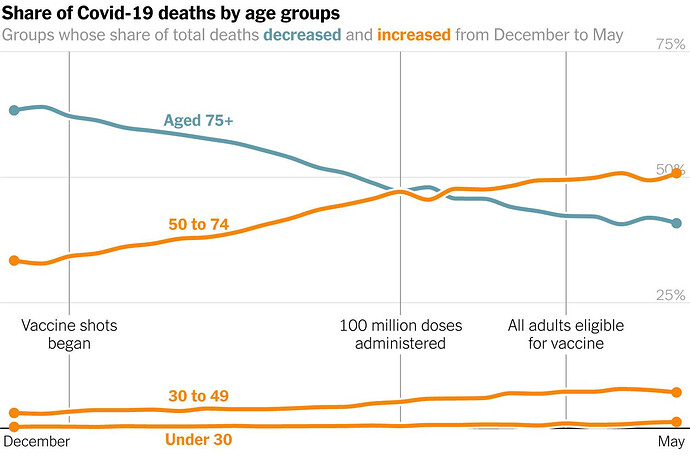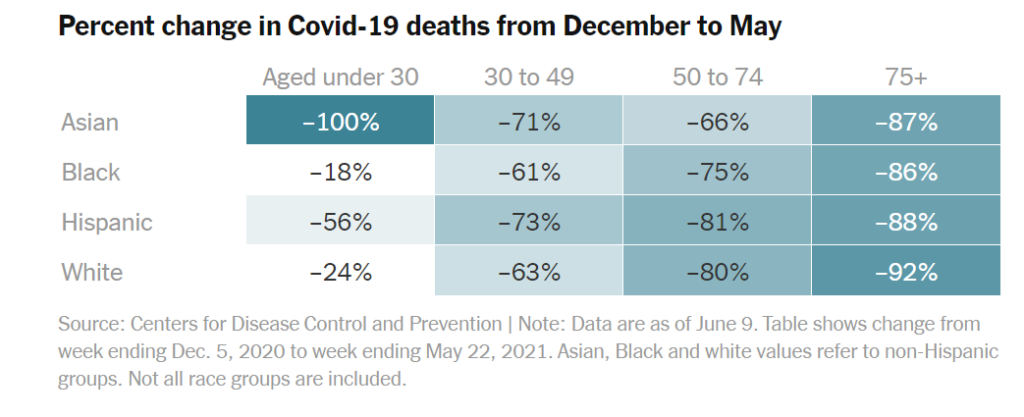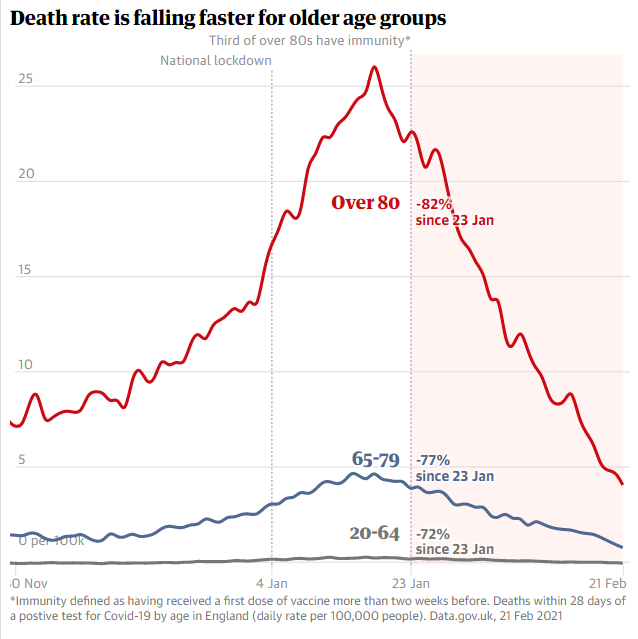Link: https://www.nytimes.com/interactive/2021/06/10/us/covid-death-patterns.html
Graphics:


Excerpt:
“Previously, at the start of the pandemic, we were seeing people who were over the age of 60, who have numerous comorbidities,” said Dr. Krutika Kuppalli, an infectious disease expert at the Medical University of South Carolina. “I’m not seeing that as much anymore.” Instead, she said, hospitalizations have lately been skewing toward “people who are younger, people who have not been vaccinated.”
More than 80 percent of those 65 and older have received at least one dose of a Covid-19 vaccine, compared with about half of those aged 25 to 64 who have received one dose. Data collected by the C.D.C. on so-called breakthrough infections — those that happen to vaccinated people — suggest an exceedingly low rate of death among people who had received a Covid-19 vaccine.
Author(s): Denise Lu
Publication Date: 10 June 2021
Publication Site: New York Times





